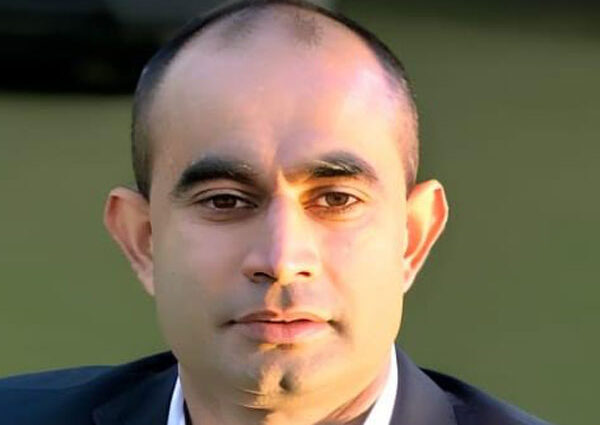Introduction: The Entrepreneur Who Solves First, Scales Later
In the tech world, founders often chase big trends and bold predictions. But for Sabeer Nelli, the secret to success wasn’t about being first to market — it was about being first to listen. His journey from managing fuel stations to leading one of the fastest-growing fintech platforms, Zil Money, began not with a billion-dollar pitch deck, but with a quiet observation: small businesses struggle with basic financial tools.
Sabeer didn’t set out to disrupt an industry. He set out to make life easier for business owners like himself. Along the way, he built a company that now empowers over a million businesses to pay vendors, manage payroll, and maintain healthy cash flow without breaking a sweat. His method? Pay attention, fix the friction, and never stop improving.
Here’s how you can apply his practical, human-first approach to build something useful — and meaningful — in your own business.
Step 1: Listen to Real Frustrations, Not Just Market Data
Before Zil Money, Sabeer ran Tyler Petroleum, a chain of gas stations and convenience stores. He wore many hats — operator, accountant, payroll manager — and saw firsthand how traditional financial systems were too slow, rigid, and expensive.
He didn’t need a study to tell him there was a problem. He lived it. Checks took too long to process. Vendors wouldn’t accept credit cards. Banks lacked the tools small business owners actually needed.
Actionable Tip:
Spend time where the problems happen. Talk to your customers. Ask what frustrates them, slows them down, or costs them more than it should. Let that guide your product decisions.
Step 2: Build One Simple Tool That Works Well
The first version of Zil Money wasn’t complex. It was a simple online check-printing solution. But it worked — and it solved a major bottleneck for business owners.
Rather than trying to build an all-in-one system from the start, Sabeer focused on one job: make check payments easier. Once he got that right, customers came back with more needs — and he built around them.
Relatable Example:
Imagine Lisa, who runs a small architecture firm. Before Zil, she spent hours each week cutting checks. After switching, she prints and mails them directly from her laptop. That time goes back into serving clients — not paperwork.
Actionable Tip:
Start with a minimum viable product (MVP). Make sure it solves one problem completely before expanding.
Step 3: Design for Non-Tech Users
Sabeer knew most of his users weren’t accountants or tech-savvy entrepreneurs. They were busy business owners who needed tools that didn’t require training or complicated onboarding.
That’s why Zil Money is intuitive, with simple navigation, clear instructions, and mobile-friendly features.
Actionable Tip:
Test your product or service with people who don’t work in your industry. If they can’t figure it out quickly, it’s too complex. Keep refining until it’s effortless.
Step 4: Help Customers Control Their Cash Flow
One of Zil Money’s standout features is its ability to let users pay rent, payroll, or vendors with a credit card — even when those recipients don’t accept cards. The platform converts the payment into ACH, check, or wire.
This solves a critical challenge: managing cash flow without relying on expensive loans.
Relatable Example:
Mike, who owns a cleaning service, often has to wait 30 days for client payments. With Zil, he uses his business credit card to cover payroll and rent — without late fees or debt stress.
Actionable Tip:
Ask yourself: how can I help my customers reduce stress, especially financial stress? Give them options. Offer flexibility.
Step 5: Use Feedback as Your Product Roadmap
Zil Money’s best features didn’t come from strategy meetings. They came from users. From bulk payment tools to improved bank integrations, Sabeer and his team listened closely to what customers were asking for.
This made users feel valued — and helped Zil build exactly what businesses needed next.
Actionable Tip:
Add a “suggest a feature” button on your website. Follow up on support tickets with surveys. Keep a running list of common requests, and let it shape your roadmap.
Step 6: Focus on the User, Not Just the Market
Too often, businesses build for what they think the market wants — and miss what actual users need. Sabeer did the opposite. Every decision at Zil Money starts with a real customer use case.
Instead of serving an imagined persona, he built for the bakery owner, the auto shop manager, the solo consultant. This user-first approach created tools that feel personal, not generic.
Actionable Tip:
Create real profiles of your best customers. Name them. Understand their day-to-day. Build with them in mind.
Step 7: Make It About Empowerment, Not Just Profit
Zil Money isn’t just a business — it’s a mission. Sabeer believes small business owners deserve the same tools as large corporations. His platform levels the playing field, giving SMBs financial flexibility, speed, and support.
That mindset fuels every new feature, every hiring decision, and every customer conversation.
Actionable Tip:
Ask yourself: If my business disappeared tomorrow, who would miss it — and why? If the answer is unclear, revisit your purpose.
Conclusion: Solve First, Grow Second
Sabeer Nelli’s path wasn’t traditional — and that’s exactly why it worked. He didn’t follow trends. He followed problems. He didn’t chase scale. He earned trust. And in doing so, he built a company that’s growing not just in size, but in value to the people it serves.
If you’re an entrepreneur, founder, or team leader looking to make an impact, take a page from Sabeer’s playbook:
- Listen to real problems
- Build one tool that works really well
- Keep it simple
- Support cash flow
- Let users shape your product
- Stay grounded in service
You don’t need to reinvent the future. You just need to make the present work better for someone.
That’s what Sabeer Nelli did — and what you can do, too.

